After v1 failed, this startup used a design sprint to get back on track.
Go behind the scenes to learn how the most forward-thinking companies are using 5-day design sprints to get way ahead with the product development.
In this article, we’re going to share with you how we helped a 2-person startup in the video space solve some big challenges that helped to define their product MVP. We applied the same process that’s been battle-tested by the team at Google Ventures.
Background on Zubia
Zubia has been working on solving a problem they spotted — there are communities that exist around certain topics; e.g. health & wellness. Within these communities there are generally two types of people: those challenged by those topics (we’ll call them consumers) and those offering expertise and/or solutions to those topics (we’ll call them creators). What Zubia realized is that these consumers and creators had little means of meeting to learn from and support one another.
A couple years ago, based on what they knew, Zubia spent several months and a decent chunk of cash to launch a web-based platform to help bring these communities together. However the reactions they received from potential customers and investors told them they’d gone down the wrong path. This meant that Zubia would need to throw away most of what they’d built and start over. However this time around, Zubia wanted to make sure this was the approach they could build a scalable business around.
Running blind vs. running smart
When we first met the founders of Zubia, they were meeting with developers and shops to determine technology budgets. We immediately suggested a design sprint. Not only would it produce the budgets and timelines they needed to chart their business trajectory, but it would be their best bet for bringing the right product to market, as quickly and efficiently as possible. But as with any hungry startup that’s eager to just get started, we first needed to prove the value of running a sprint vs. diving head-first into product development.
When you’re a bootstrapped startup, cash spend is top-of-mind 24/7/365. In the months leading up to meeting Zubia, they had already spent time and money building a web-based prototype of their product. In their minds, they already knew that a port to mobile was all they needed. However spending 5 days to be sure was too alluring for Zubia to pass on.
Realistic logistics of a sprint
As it turns out, not everyone that will be part of your sprint will live and work on the same street. For example, the Zubia sprint was going to take place in Manhattan however the people participating were coming from Europe, Florida and New Jersey. Travel and accommodations needed to be planned and paid for well in advance.
Meeting locale.
We needed a place to meet in NYC. We chose WeWork. We reserved 1 of their 10-person conference rooms from 8am — 6pm for an entire week. We made sure the room came with at least 1 whiteboard.
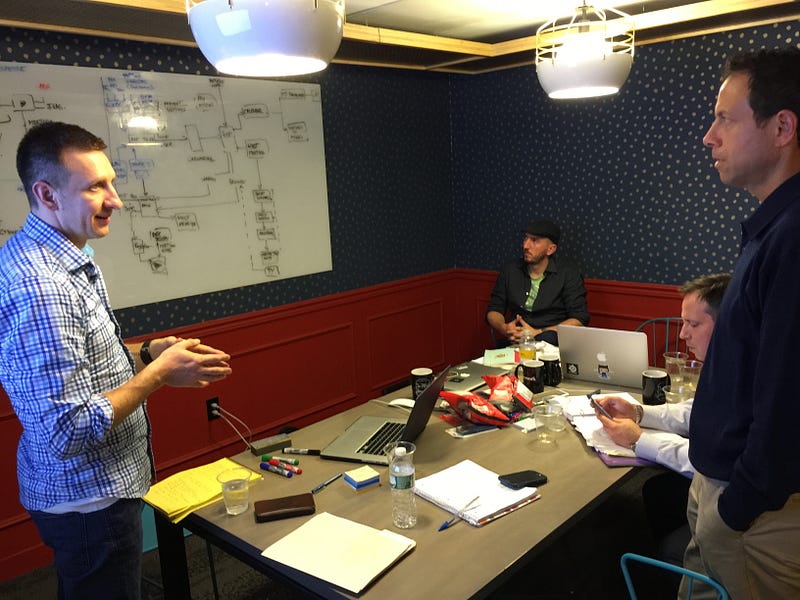
Supplies + fuel.
We stocked up on the rest of the supplies we’d need. We coordinated our breakfast and lunch schedules for the entire week, in advance. The less we had to think about food the more we could concentrate on the sprint itself. And when all else failed, WeWork has a small kitchen stocked with drinks, healthy-ish snacks and caffeine (and beer).
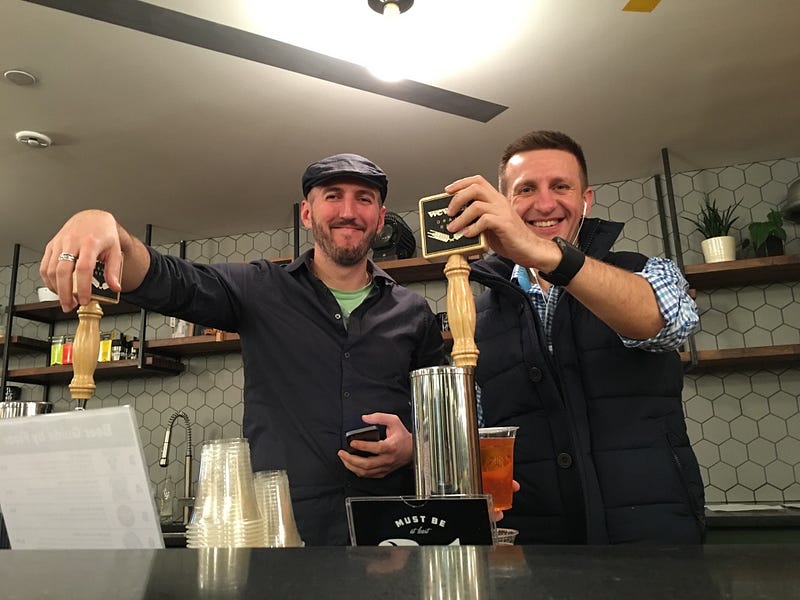
In summary, we were prepared for day one and made sure the Zubia team was, too.
Running the Zubia sprint
We followed the 5-day blueprint for running the Zubia design sprint.
Day one: Prior to day one, the challenge we selected asked the question would people find value in forming communities within a mobile application to learn and share information related to specific topics? We then unpacked our understanding of this challenge by mapping out the journey of those people that would use such an application.
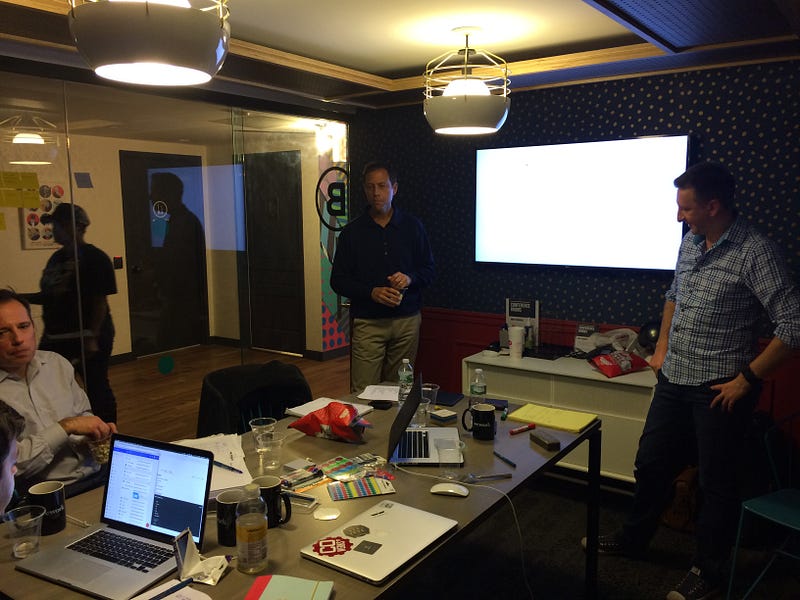
Day two: We all started sketching solutions. We heard the usual concerns from founders, like “But we’re not designers.” We assured them that the point of the exercise was to get visual ideas down on paper that could then facilitate discussion. No formal art degree required!
Day three: This day consisted of up-voting our favorite solutions. Afterward, we added in details that were overlooked, fuzzy or missing altogether from day two’s sketches — these might include screens, elements, interactions, language.
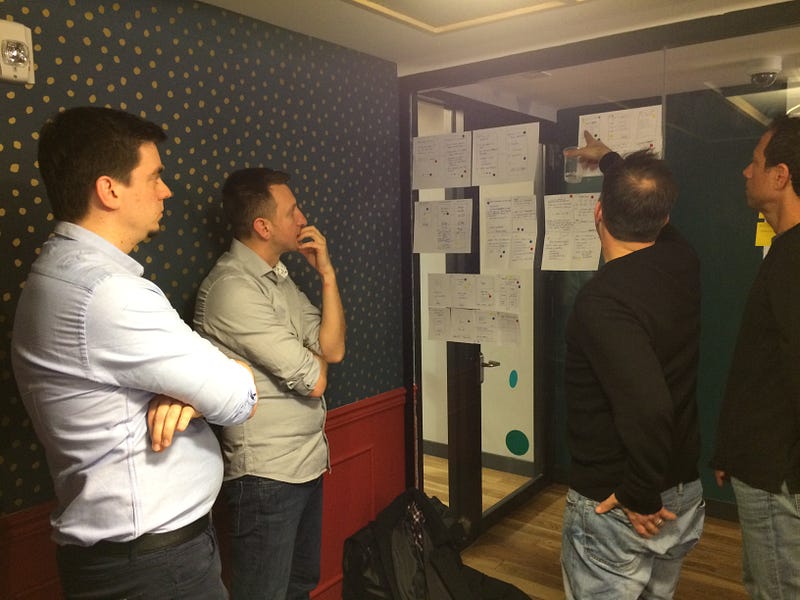
The Zubia sprint team huddles around sketches to vote and discuss finer details.
Day four: Prototyping day is typically when founders perk up the most — their solutions takes form. It’s exciting! Within the span of a single day we were able to build a mobile app prototype that consisted of nearly 30 screens. We used Sketch to create the mocked screens and then stitched it together into a navigable prototype using Marvel. (Note: during later refinements of the prototypes we’d port the app into our design collaboration tool of choice, InVision).
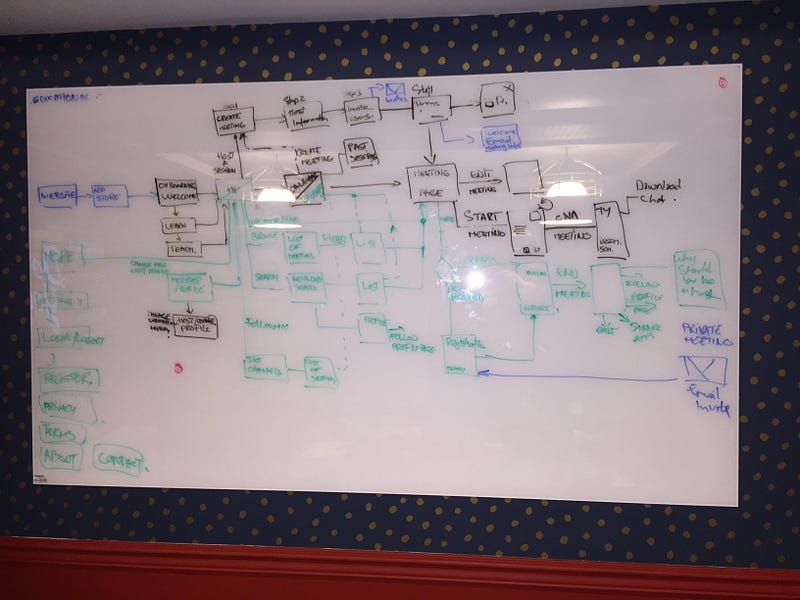
Prior to mocking up the screens, we framed out this and several other user journey maps.
Day five: When it comes to customer testing, it’s ideal to do the interviews in-person. But it doesn’t always work out that way. In the case of Zubia we had to resort to testing over Hangouts. We lined up several customers from each of our consumer and creator groups and spent the day observing, capturing and questioning. Our prototyped solutions received just the affirmation we needed to confirm the Zubia problem was in fact one worth solving.
Design sprint ROI
We understand that sound cash management is rule #1 in every startup. That’s why one of our immediate goals when kicking off with a startup is to prove the outright value of the sprint. With Zubia, the ROI came on day one.
Putting Zubia’s monetization strategy to test.
The Zubia team had always assumed that the practical and socially responsible avenue for making money would be to charge the creators a subscription fee. However, in the opening hours of our sprint, we discovered one undeniable obstacle with that monetization approach — the addressable market of creators is far smaller than those of the consumers. Instead, we agreed upon testing a hybrid payment solution.
Spotting this problem on day one enabled us to include it in our sketches, prototype and customer interviews with both user groups. The feedback received was ultimately critical in helping us decide upon the actual payment options the actual Zubia app would offer.
What next?
After one jam-packed week with Zubia, we were able to help them put a 12-month product roadmap together. This roadmap provided them with all of the user stories (features), budgets and timelines in order to bring their MVP to market. Armed with this information, the founders were able to green light the development of their MVP which has now been launched within the app store.
Reactions from the founders
“The design sprint which New Haircut orchestrated helped to translate the ideas of our application into an actual prototype, which formed our MVP. We were exceptionally impressed with the approach and the fast pace at which we worked together to maximize the elements of the sprint and the delivery of the finished product.”


